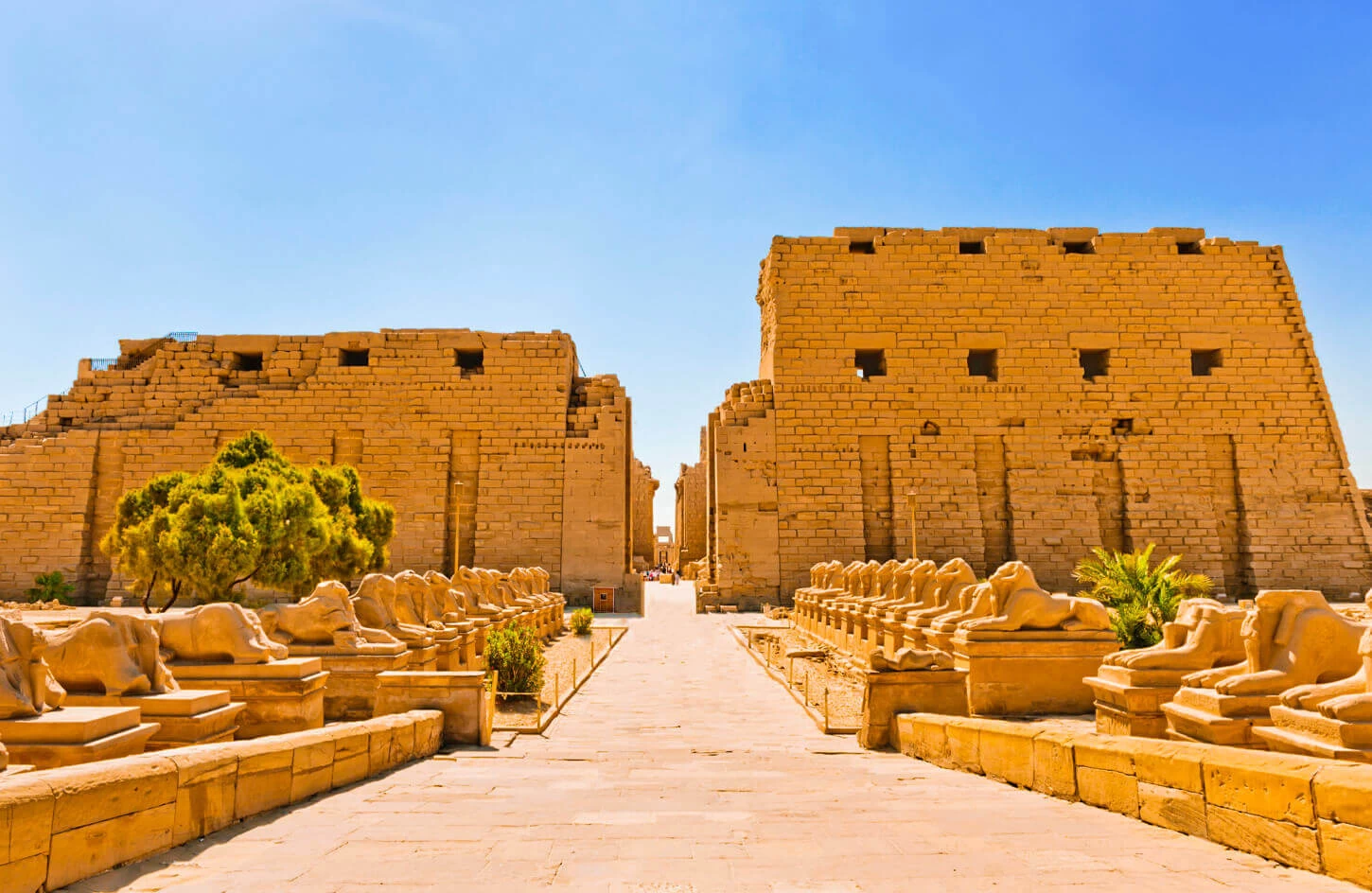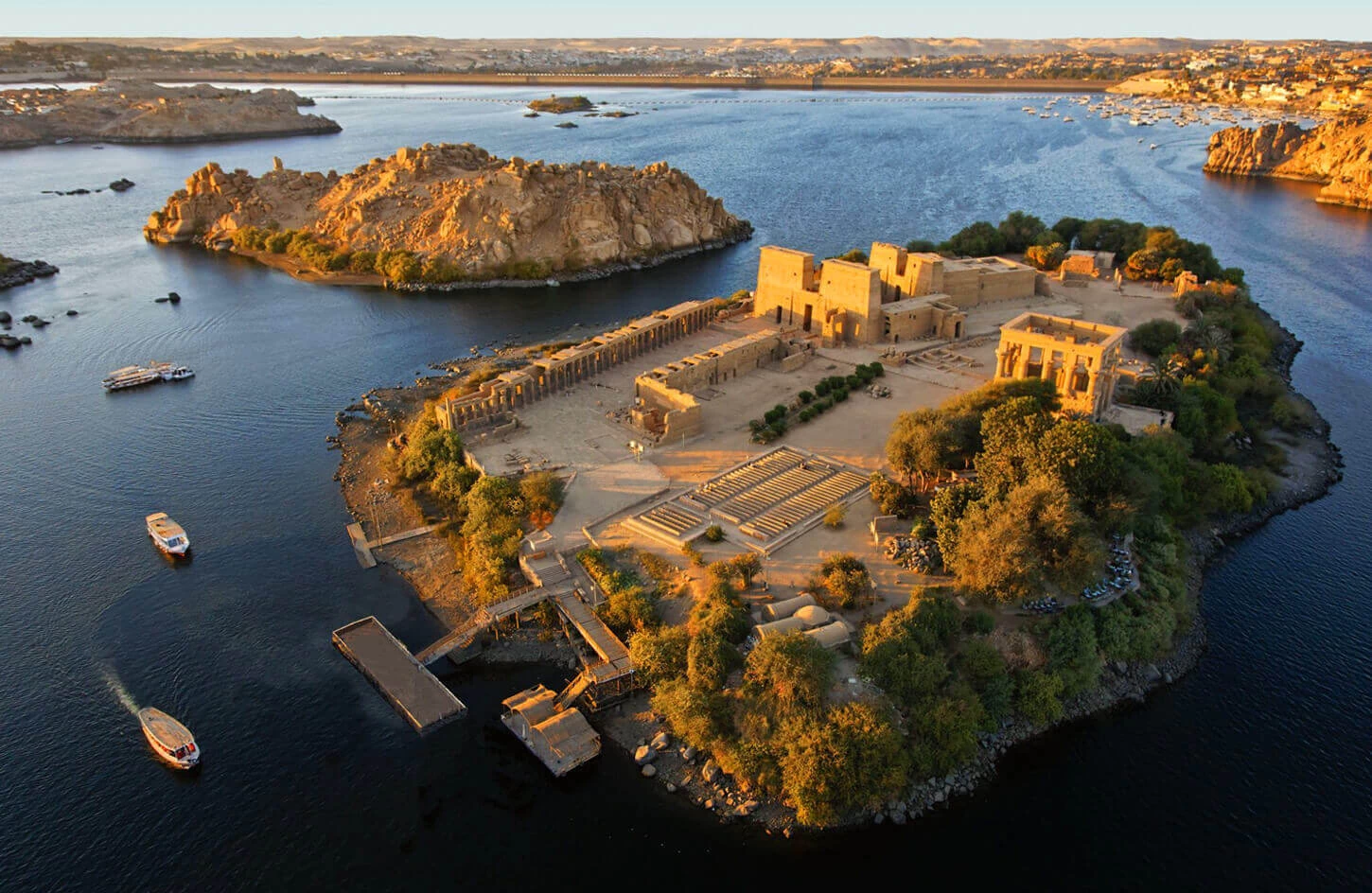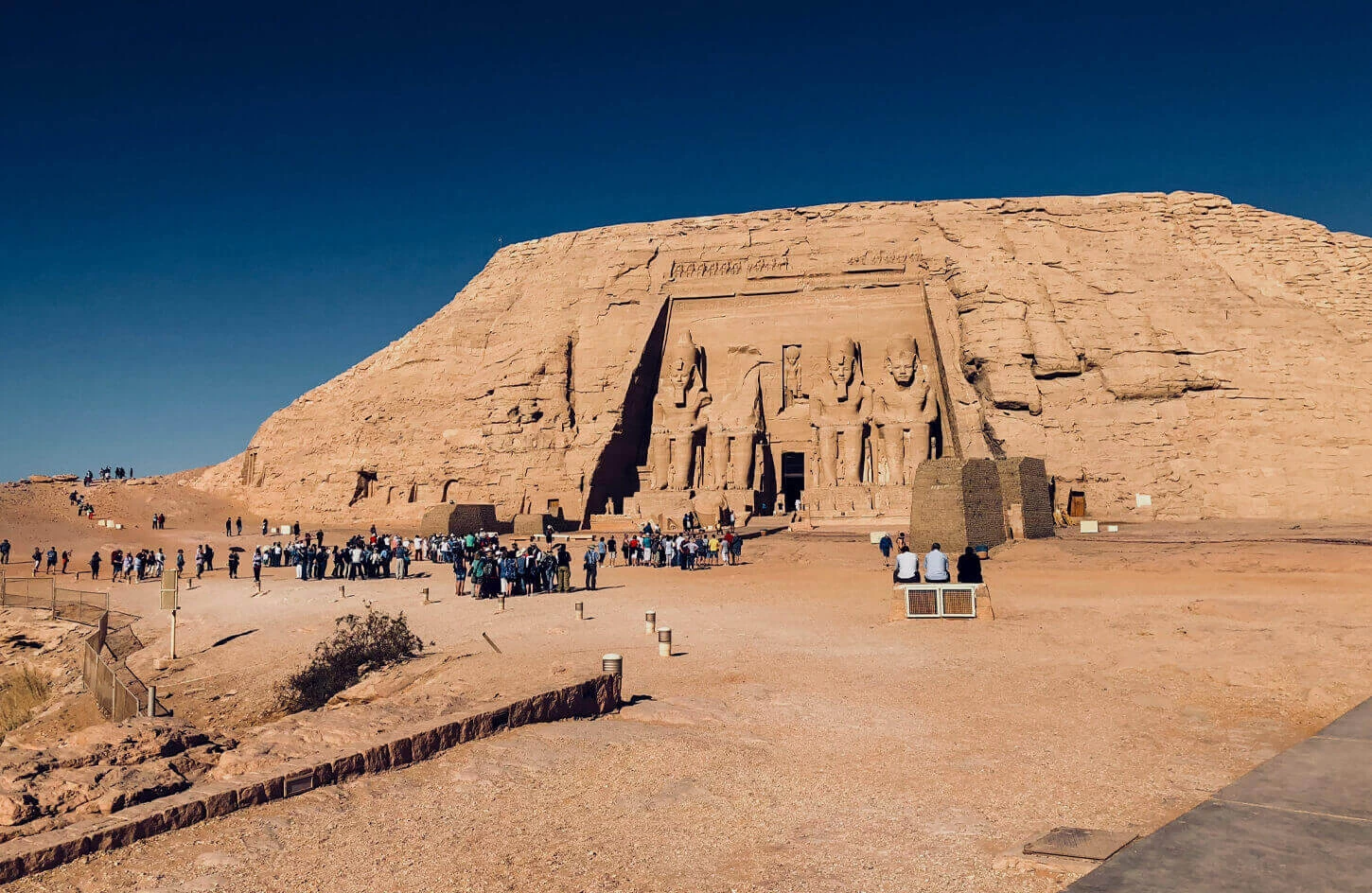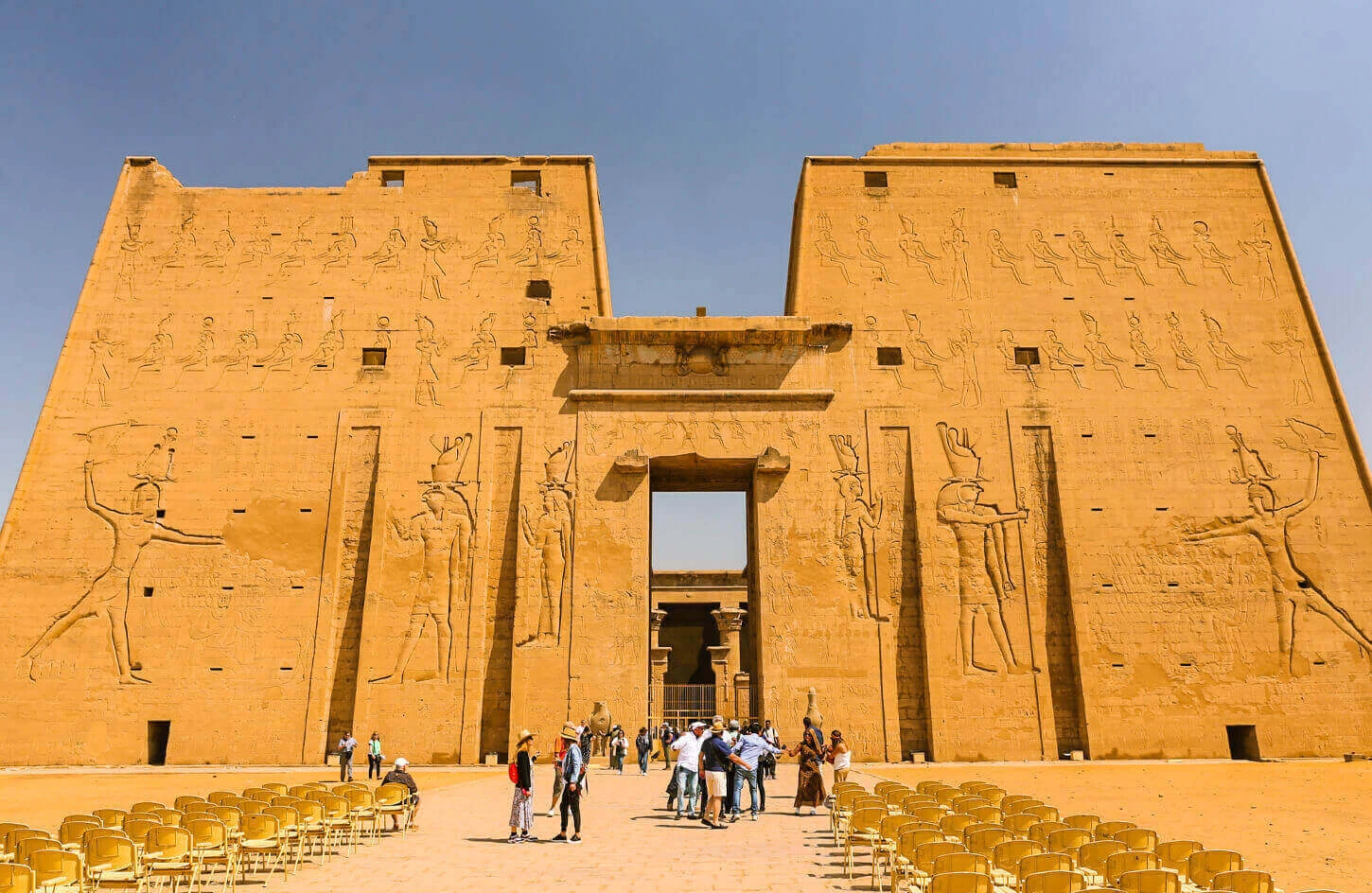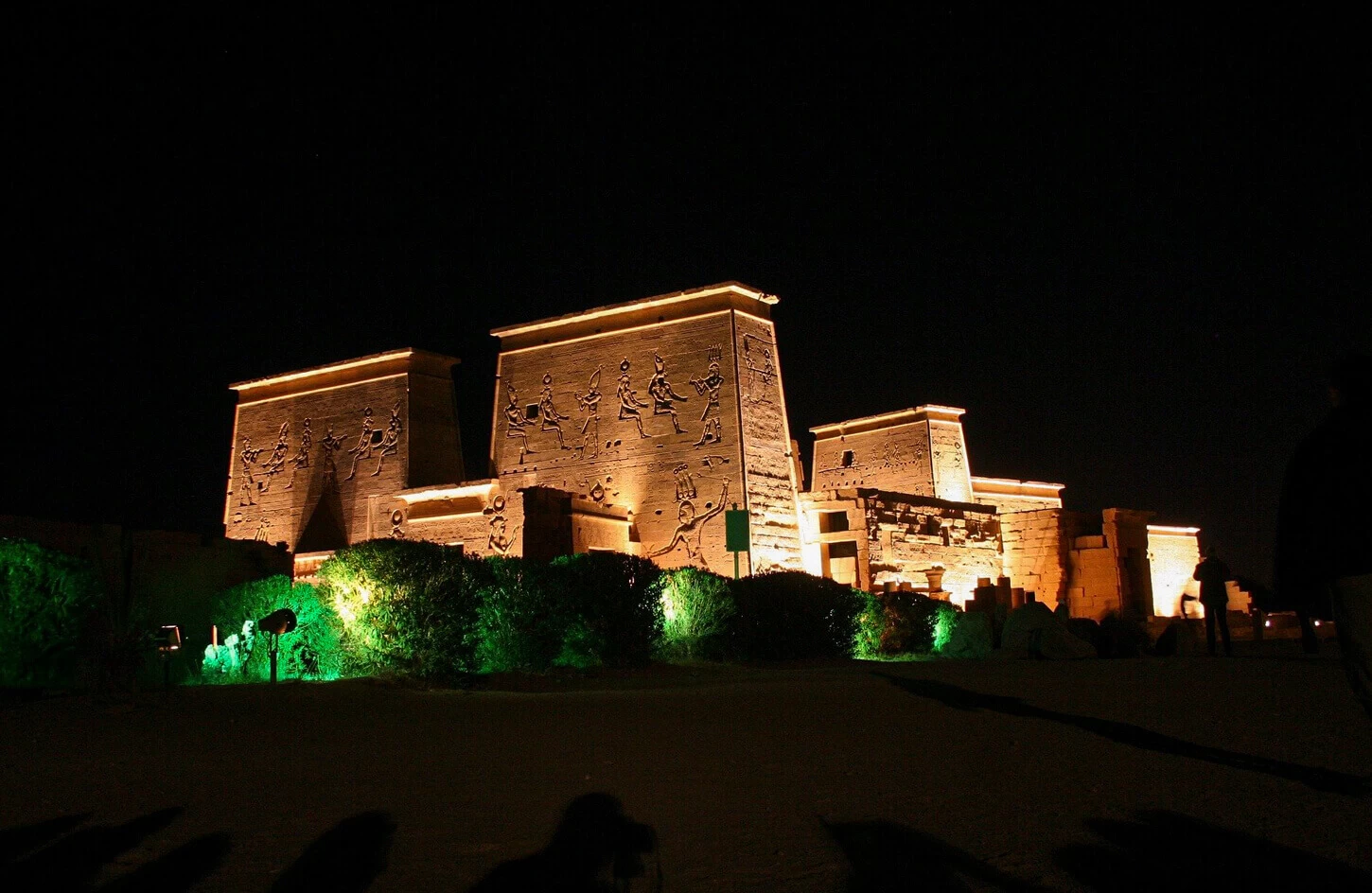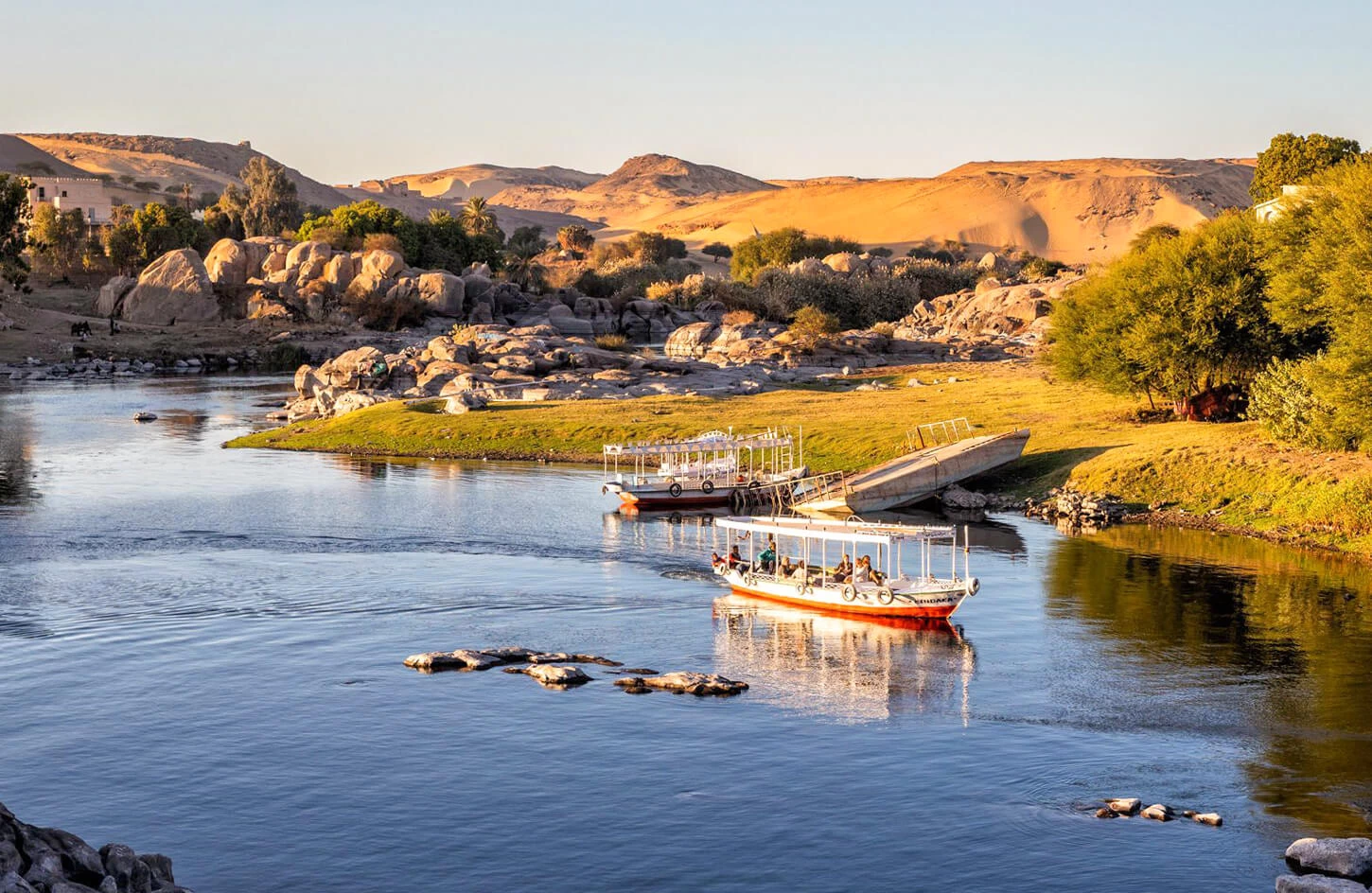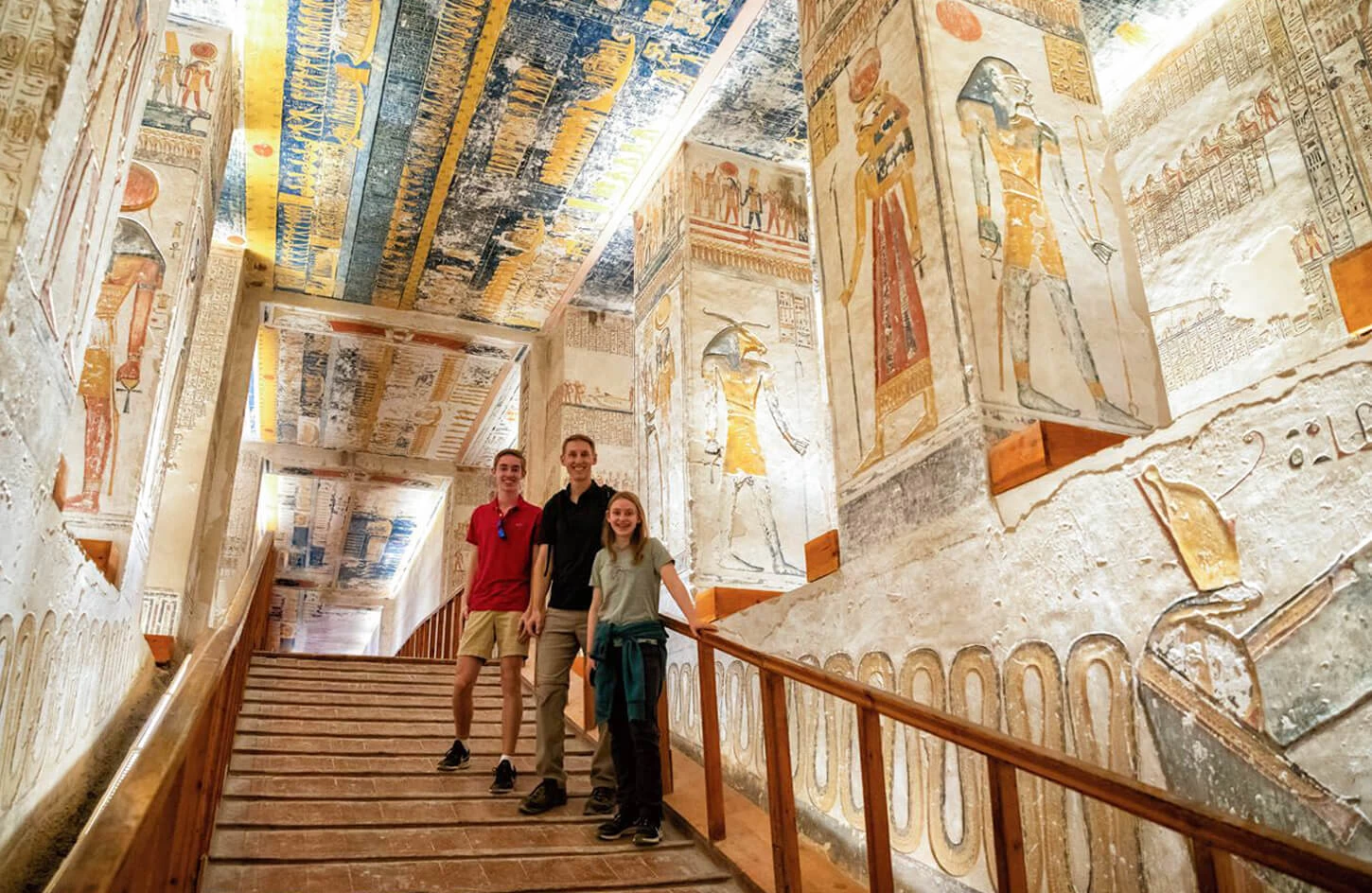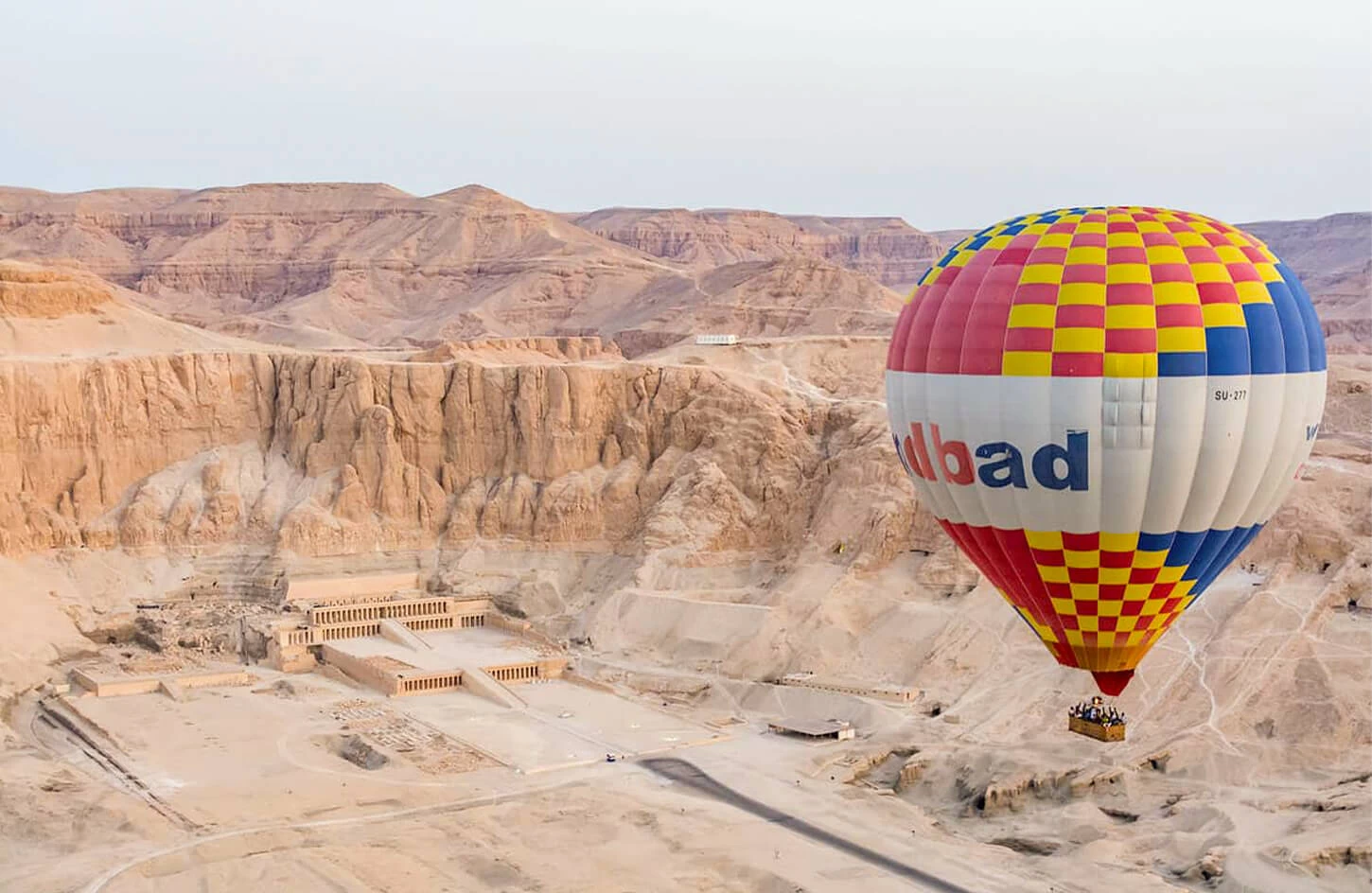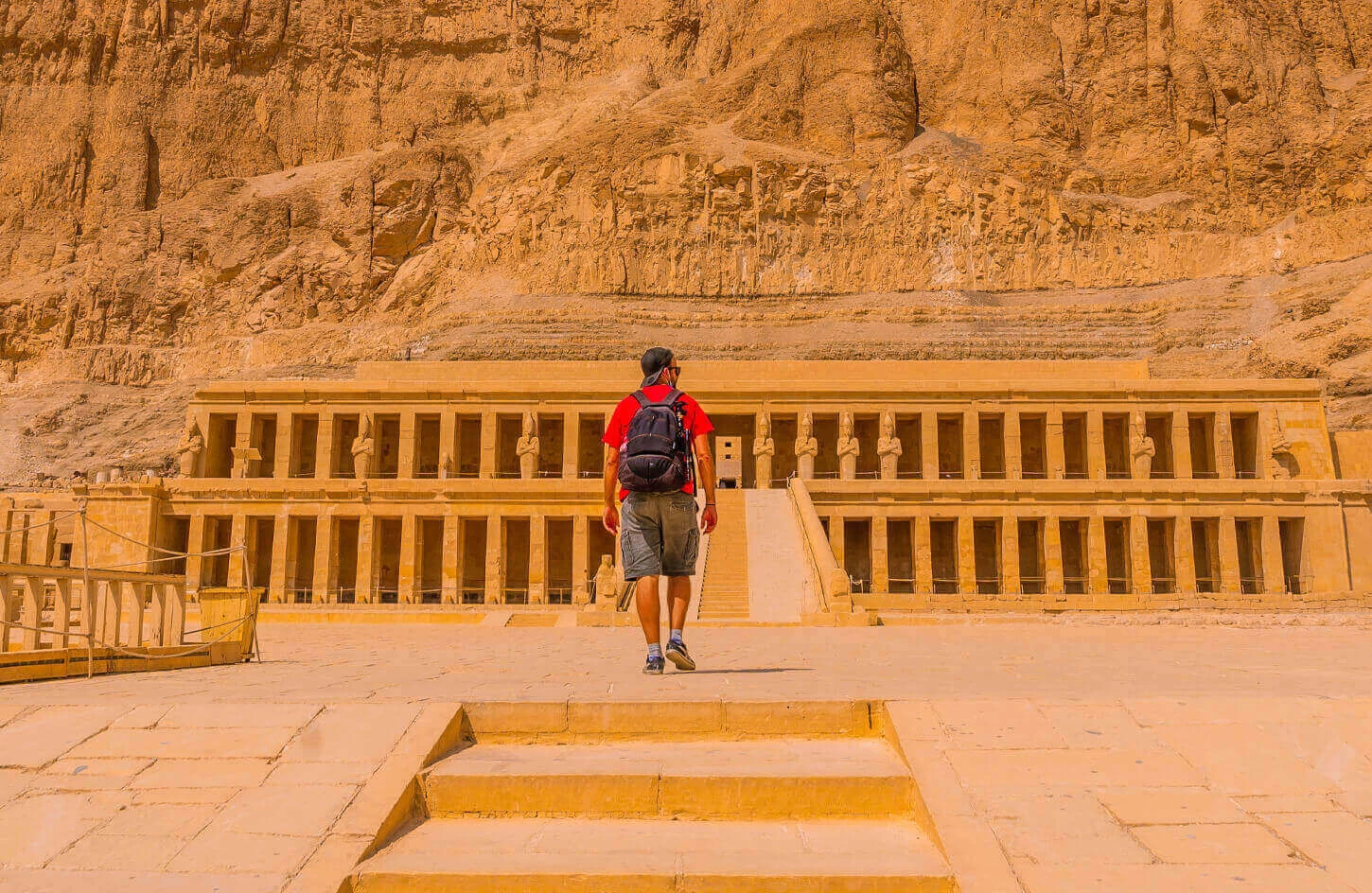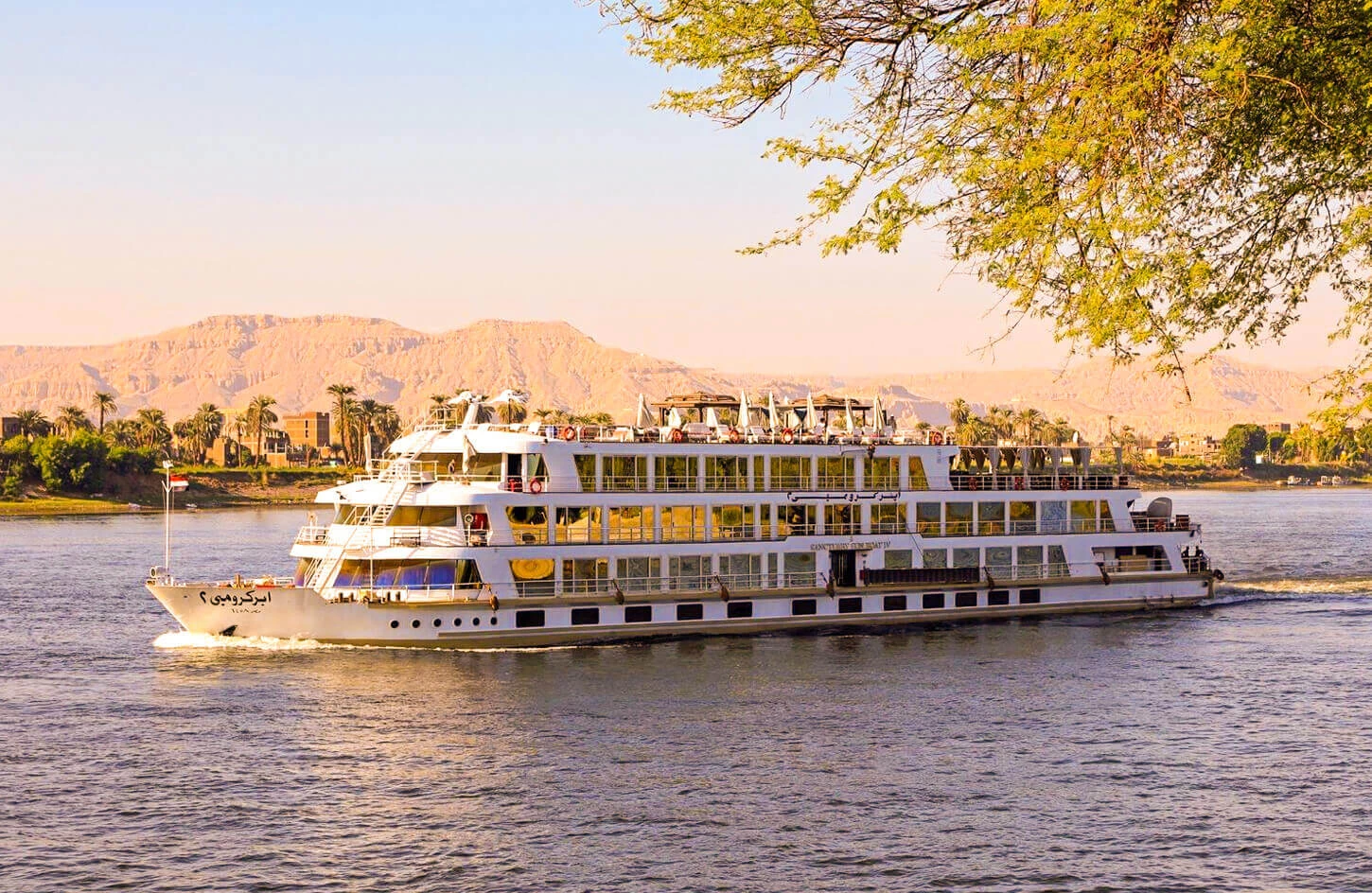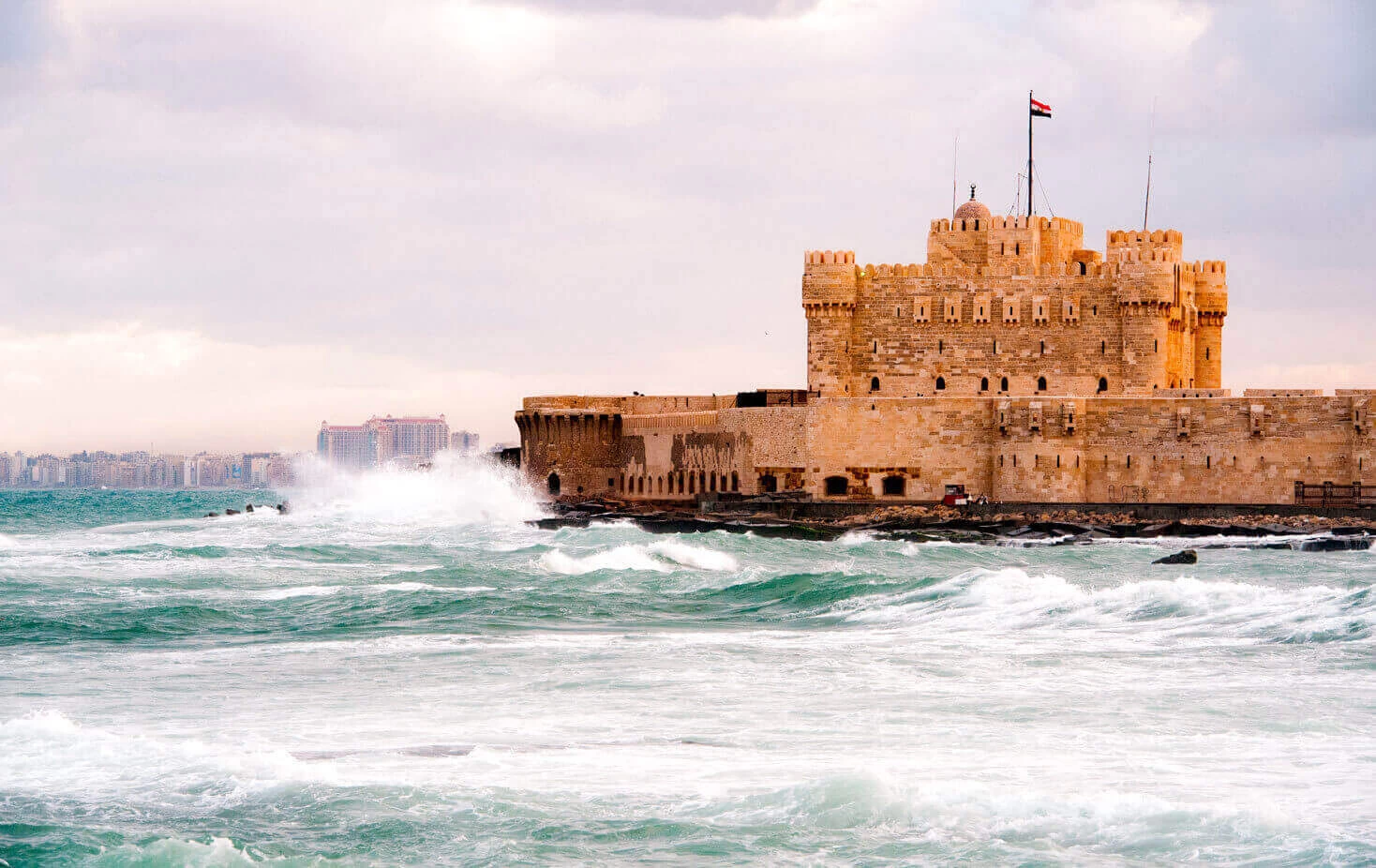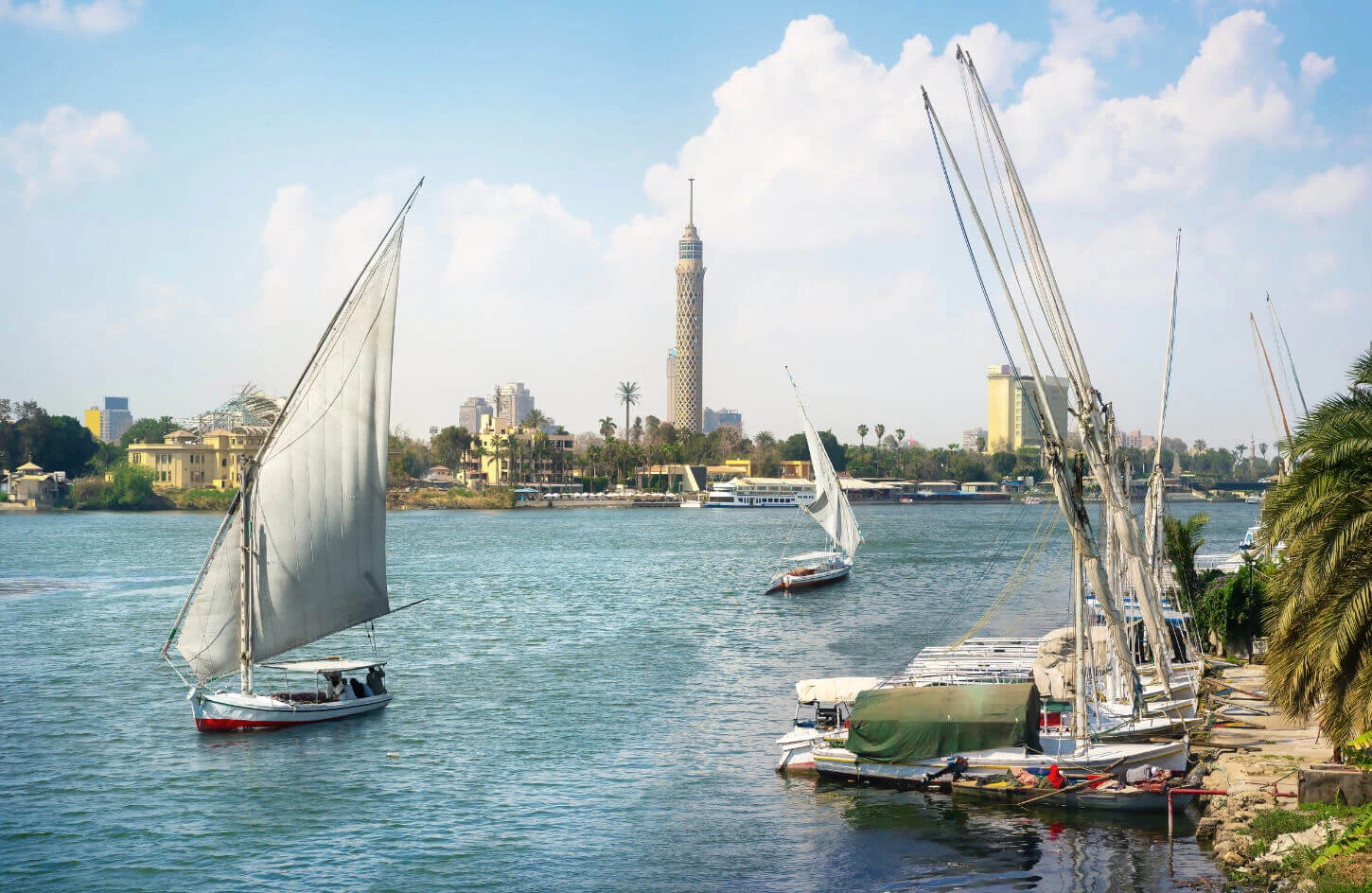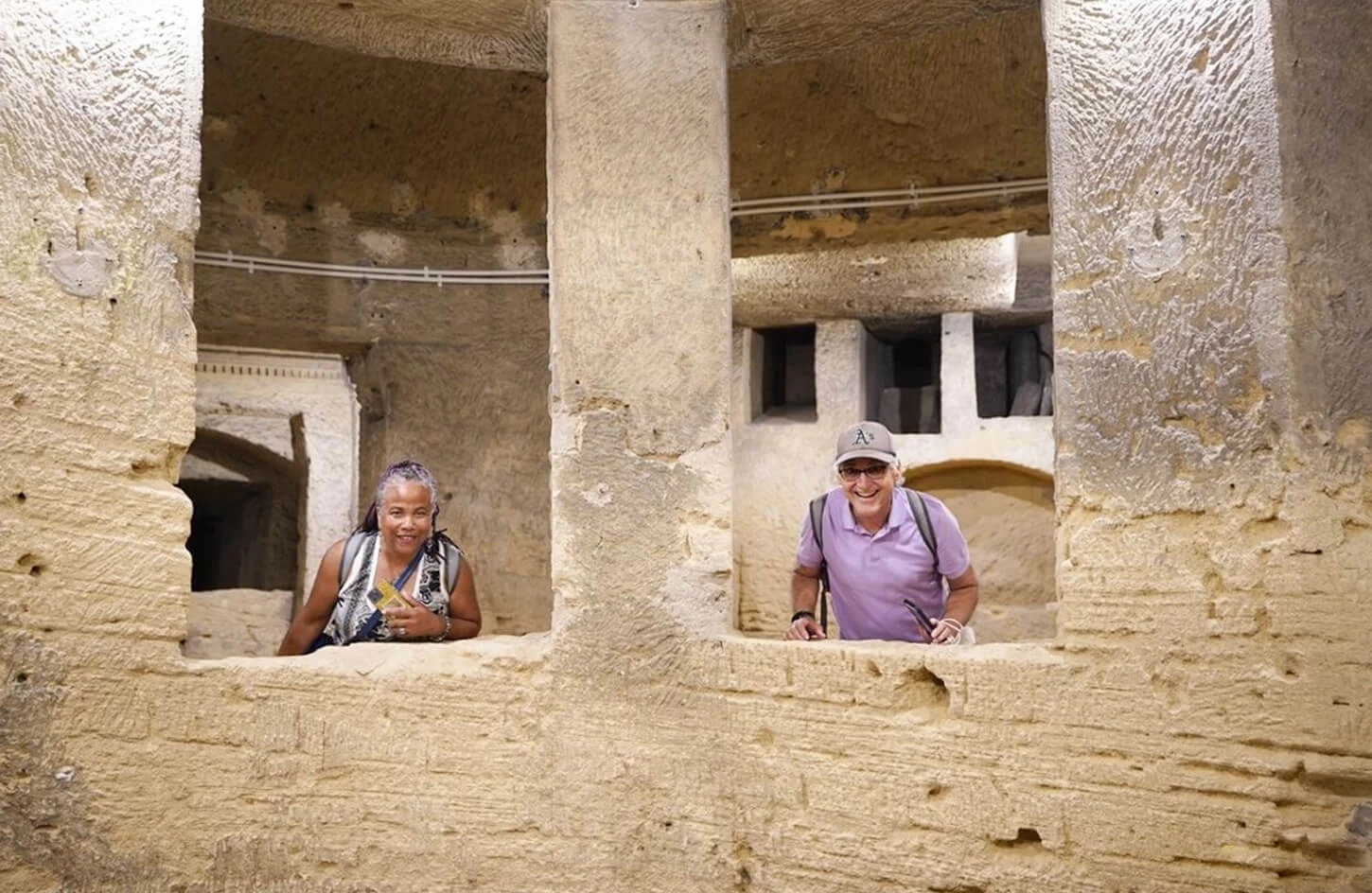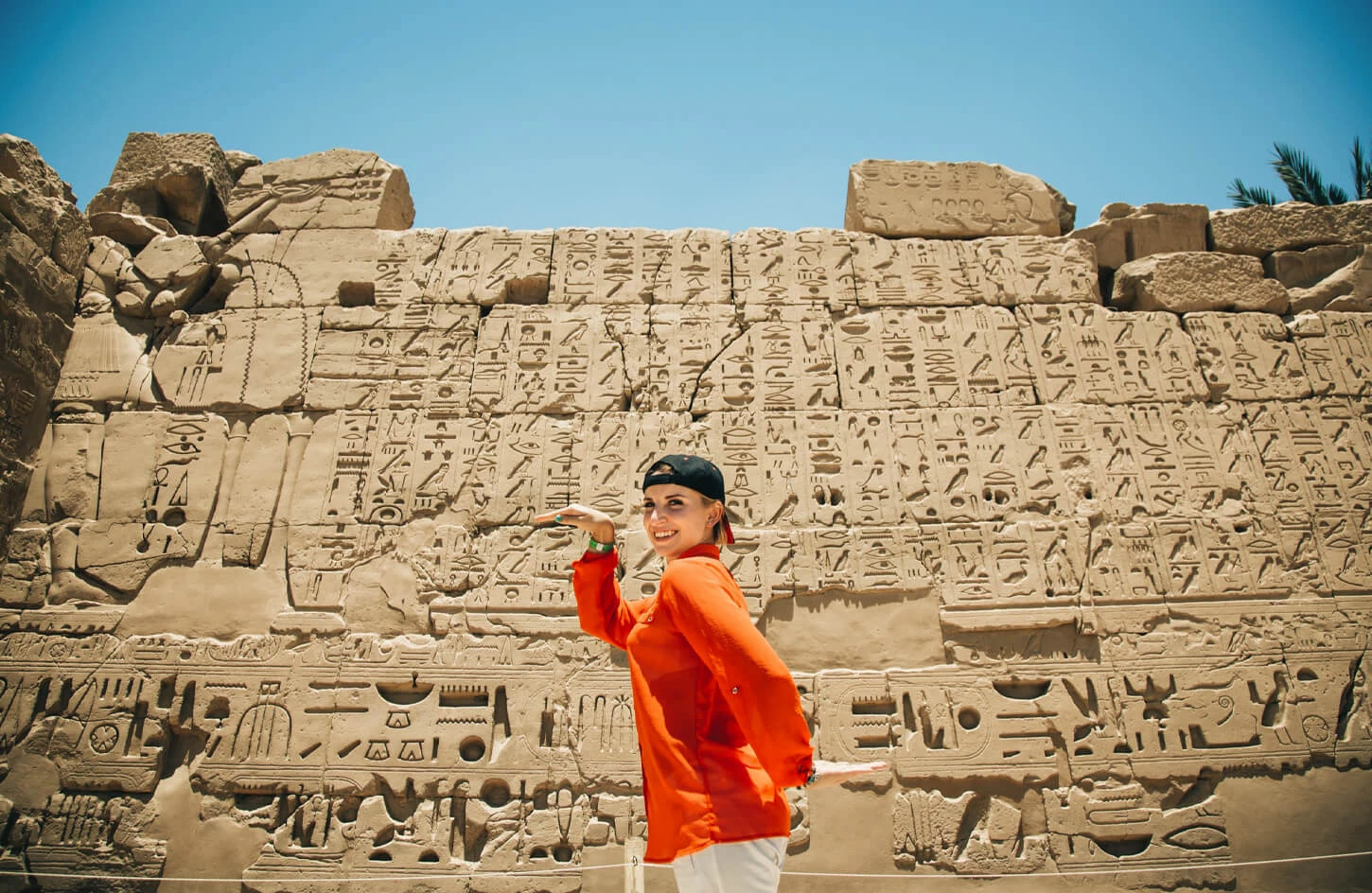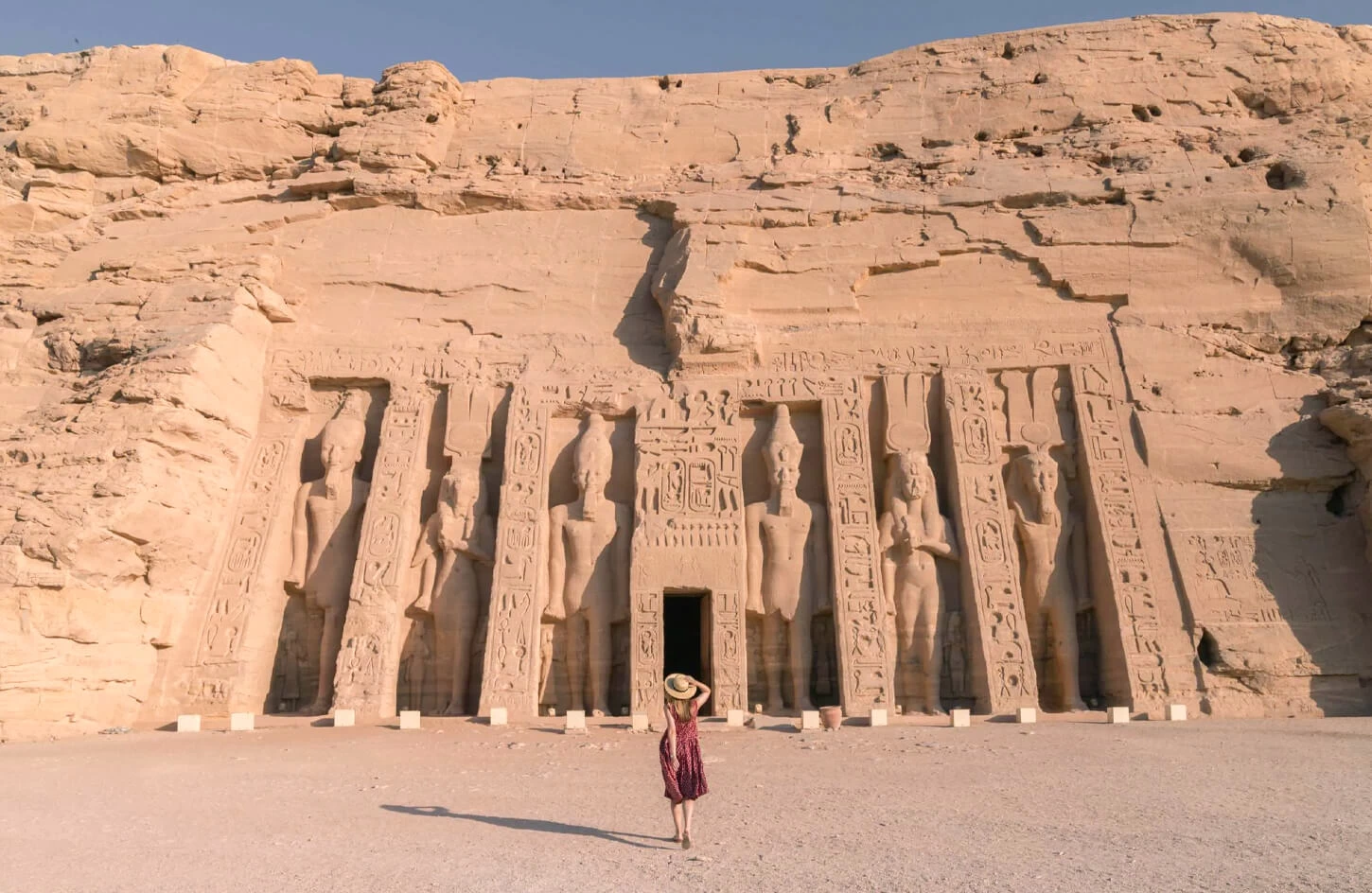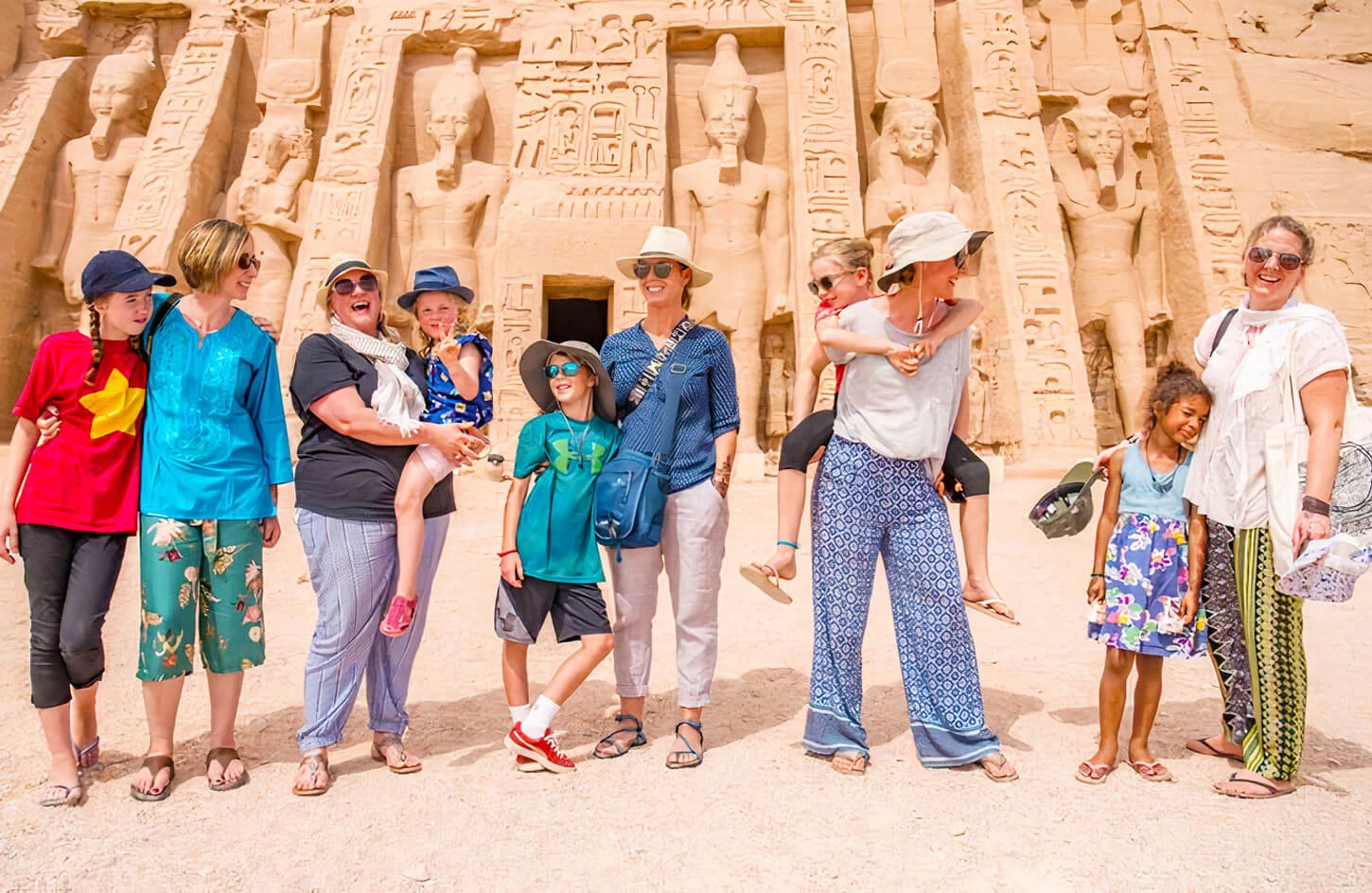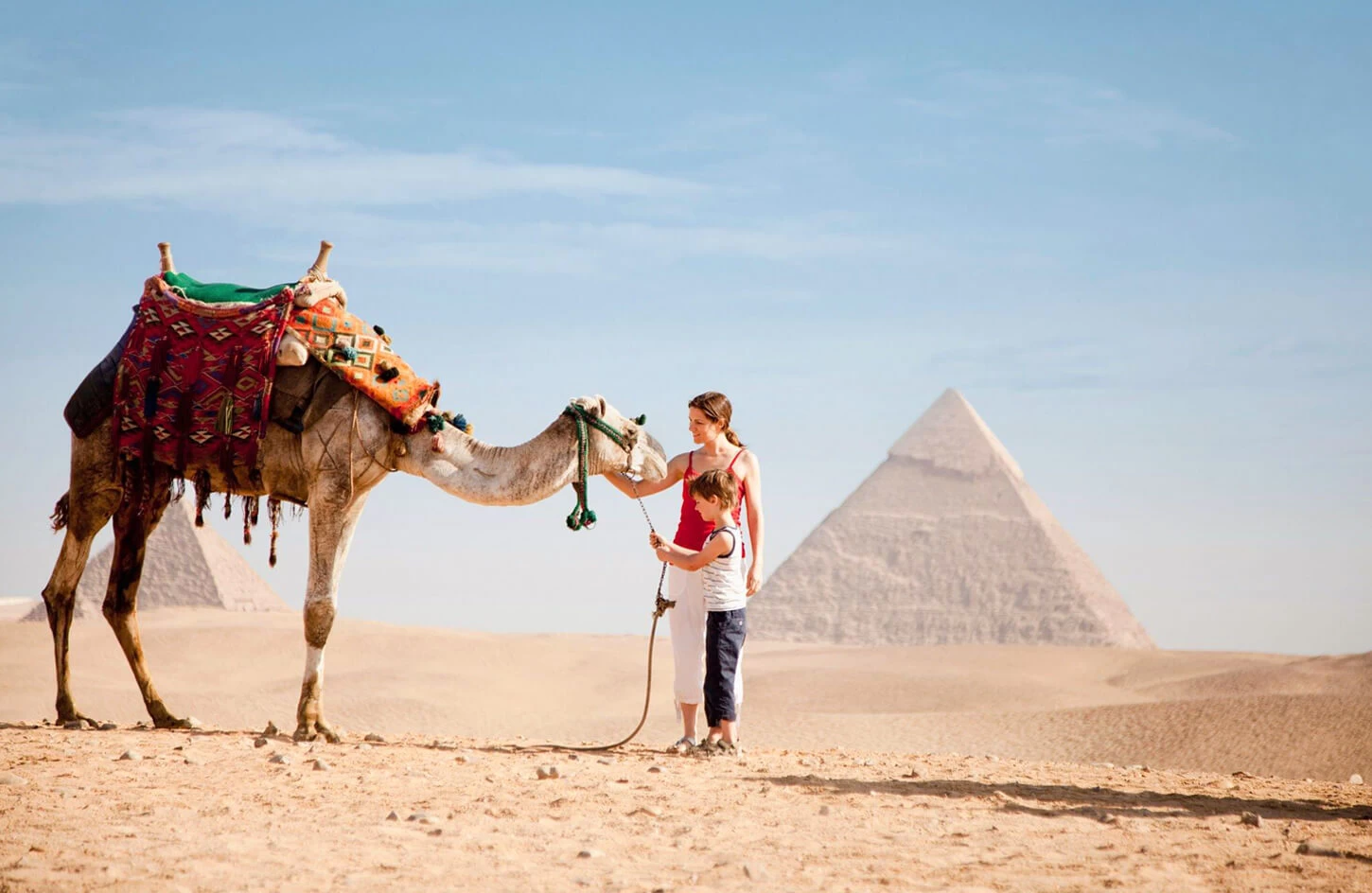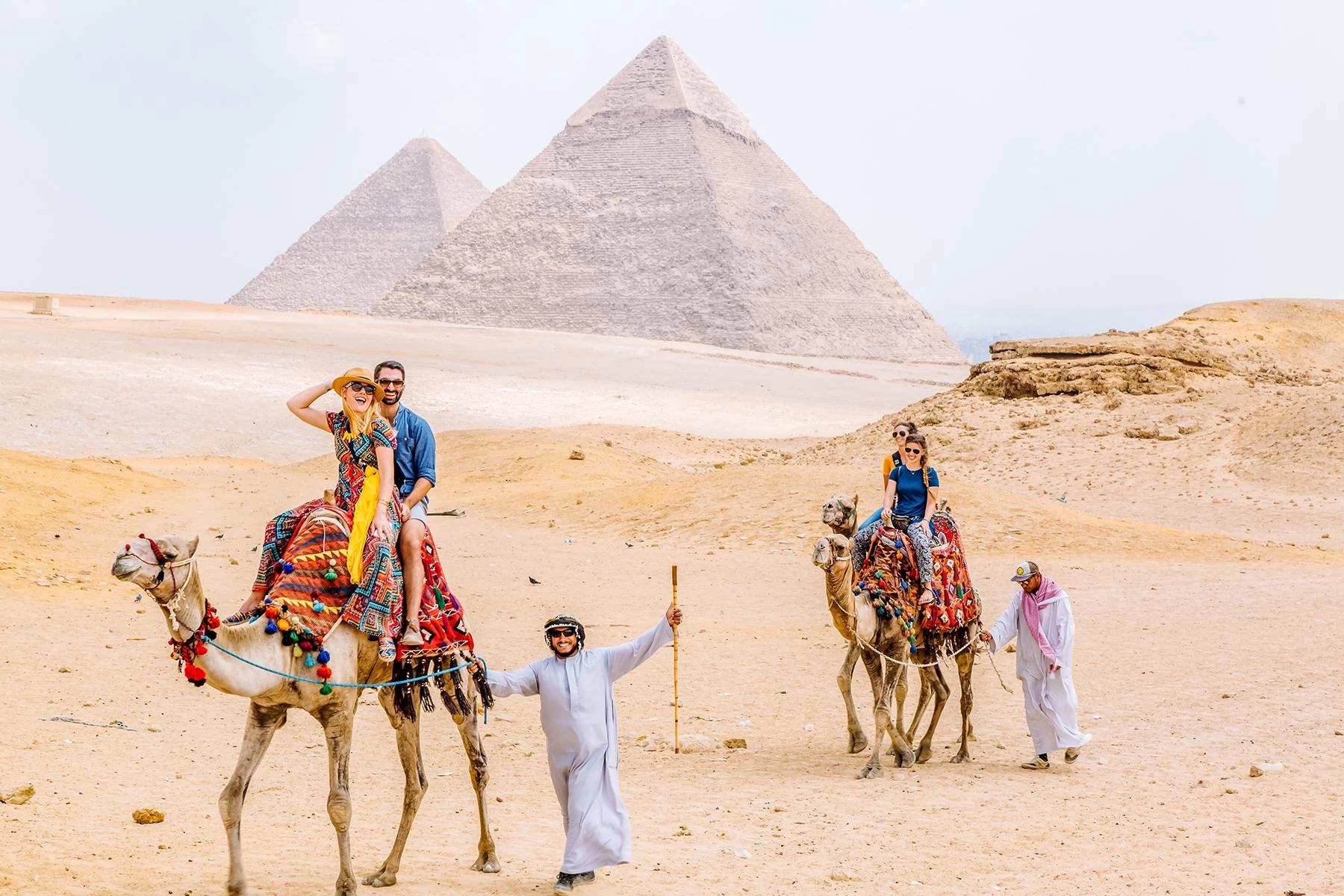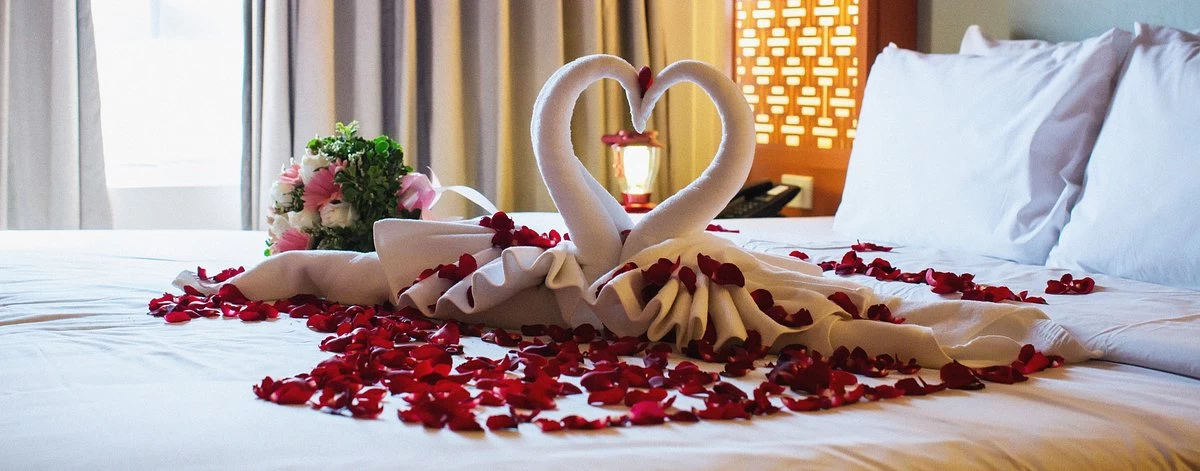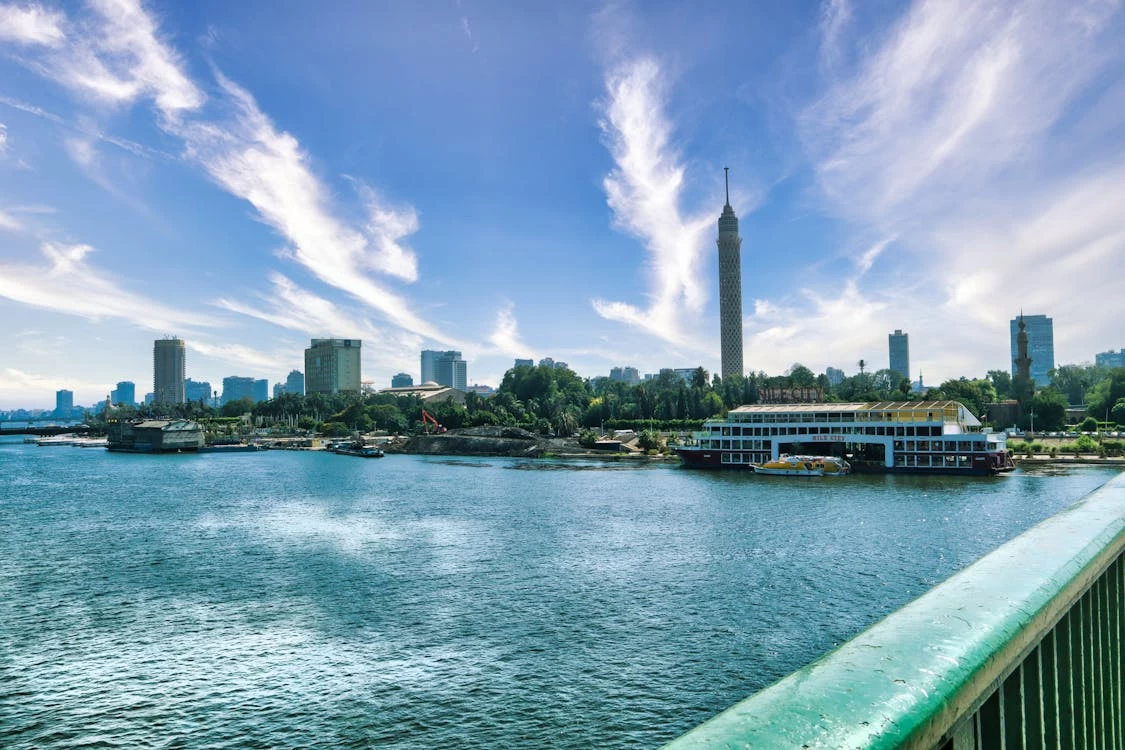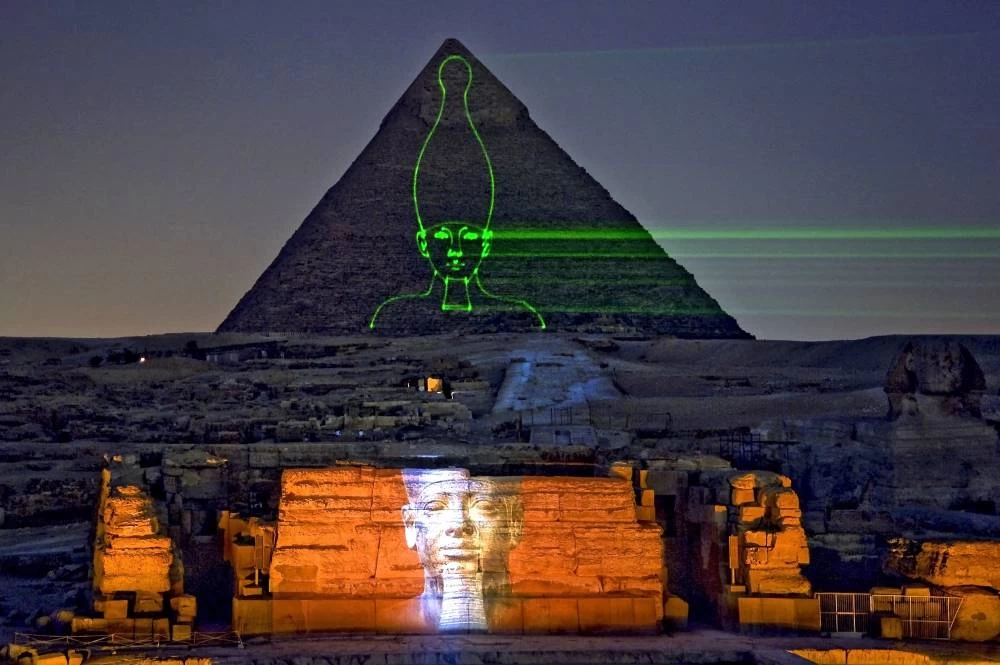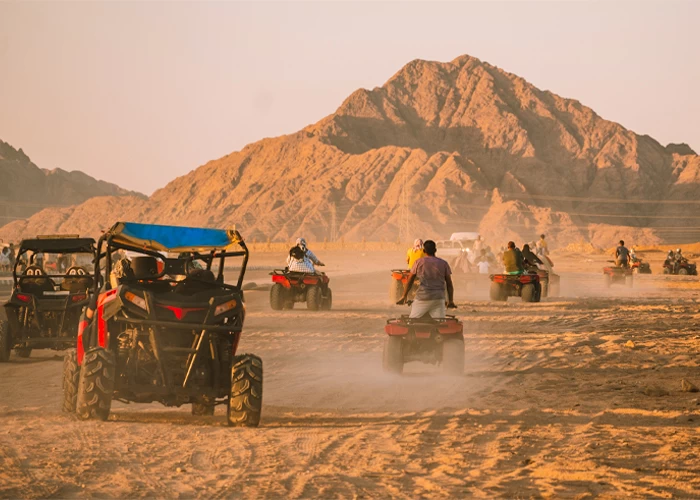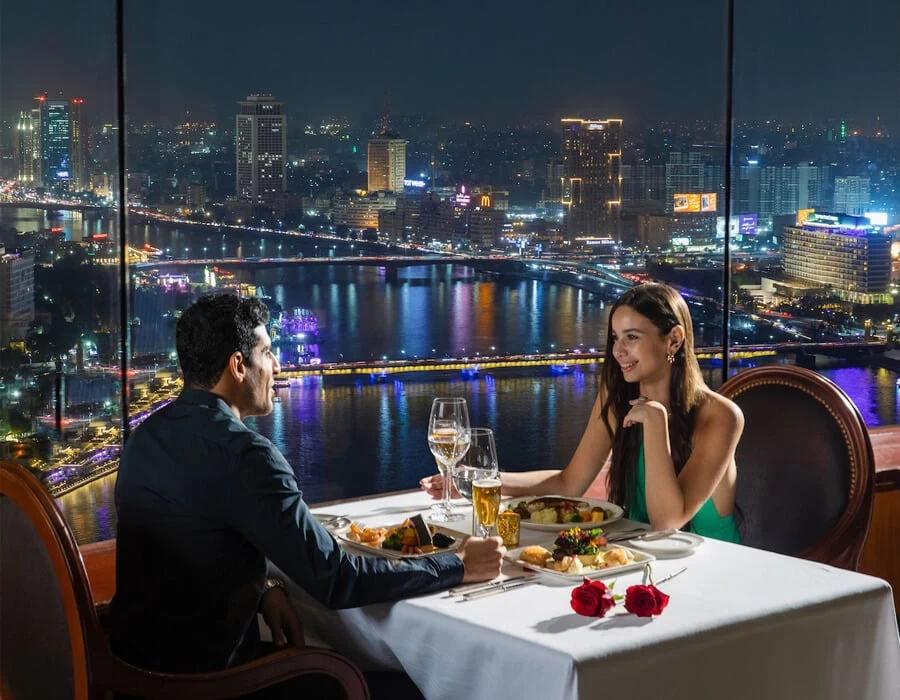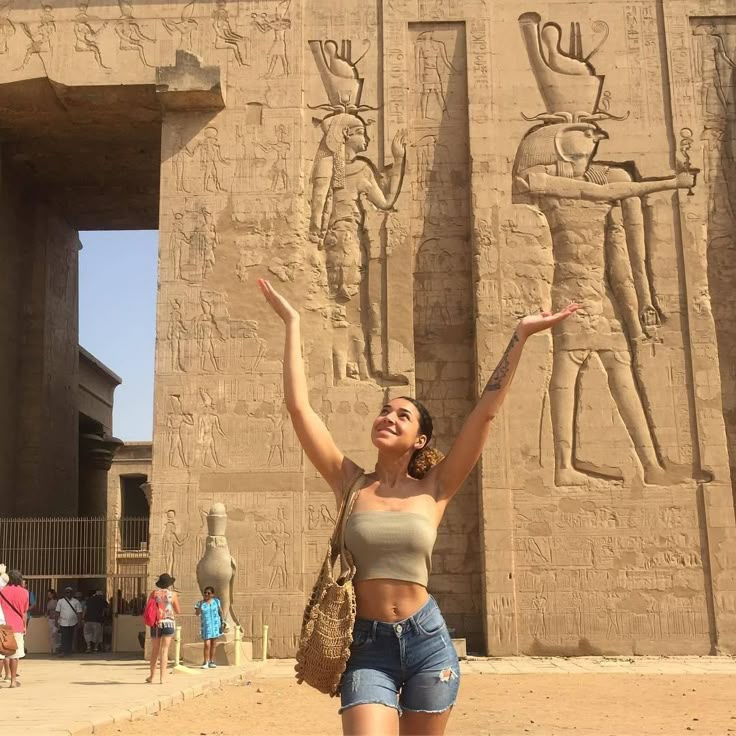Temple of Hatshepsut in Luxor
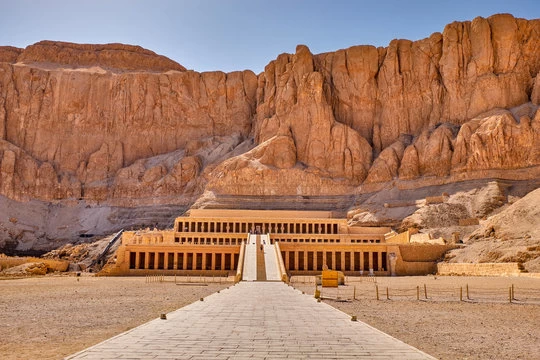
location of Hatshepsut Temple
Hatshepsut (c.1473–1458 BC), the queen who became pharaoh, built a magnificent temple at Deir al-Bahari, on the west back of Luxor . It lies directly across the Nile from Karnak Temple, the main sanctuary of the god Amun. Hatshepsut’s temple, Djeser-djeseru “the Holy of Holies” was designed by the chief steward of Amun, Senenmut.
The temple consists of three levels each of which has a colonnade at its far end. On the uppermost level, an open courtyard lies just beyond the portico. Mummiform statues of Hatshepsut as Osiris, the god of the dead, lean against its pillars.
Why Hatshepsut's temple is an architectural marvel
On the Luxor tours, you will discover the Mortuary Temple of Hatshepsut, a structure from the Eighteenth Dynasty of Ancient Egypt, and one of the best-preserved temples built around 3500 years ago in Deir el-Bahari, Egypt. Queen Hatshepsut built this temple on the western bank of the Nile opposite Thebes or Thebes of Egypt (the capital of Ancient Egypt and the center of worship for Amun) (modern-day Luxor). The Temple of Hatshepsut is distinguished by its unique architectural design, compared to the Egyptian temples built on the eastern bank of the Nile in Thebes. The temple consists of three successive terraces on open columns. Built of limestone, in front of the columns of the second terrace, there were beautifully arranged limestone statues depicting the god Osiris and Queen Hatshepsut. These statues were originally colored, and now only a few monuments and statues in excellent condition remain, showcasing the elegance and beauty of the temple's design.
The History of Hatshepsut Temple
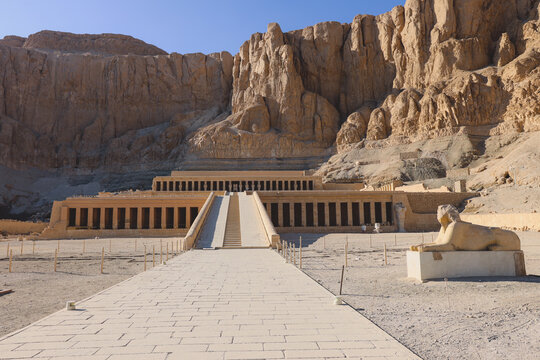
Hatshepsut was one of Egypt's greatest pharaohs - Hatshepsut brought much wealth and art to her nation.She sponsored one of the most successful trade missions in Egypt, coming back with gold, ebony, and incense from a place called Punt (most likely present-day Eritrea, a country in Africa). She left her mark by building structures that still exist today. She finished two hundred-foot-tall obelisks for the Great Temple complex in Karnak . (One is still intact.) She built the funerary temple of Deir el-Bahri, a structure with several stories of columns at the front, where she was eventually buried.
Hatshepsut was typically depicted in paintings or sculptures as a man, with muscular characteristics and a beard, in accordance with artistic convention for pharaohs. But historians recognized the reality of her nature: she demanded that the artwork convey femininity, with descriptions such as "daughter of Ra" or "Her Majesty herself." Egypt would not see a ruler so mighty for another 1,400 years, when Cleopatra ascended to power, after Hatshepsut died in 1458 BC.
Hatshepsut was one of Egypt's greatest pharaohs - Hatshepsut brought enormous wealth and culture to her country. She sent one of Egypt's most successful trade missions, which came back with gold, ebony, and incense from a place called Punt (which is thought to be modern-day Eritrea, a country in Africa). She made sure that people would remember her name by building structures that still stand today. She had two hundred-foot-tall obelisks built as part of the Great Temple complex at Karnak. (One is still intact.) She built the funerary temple of Deir el-Bahri, a structure with several stories of columns in front, where she was eventually buried. Hatshepsut was nearly always depicted in paintings or sculptures as a masculine figure, complete with large muscles and a beard, following the pharaohic artistic convention. But the historians were aware of that reality: She always made sure that artworks contained some hints of her femininity as a woman, for example, by saying “daughter of Ra” or “Her Majesty herself.” You'll see all the details in the Luxor tours. With her death in 1458 BC, Egypt would not see a ruler like her for 1,400 years, when Cleopatra ascended to power.
A Guide to Visiting the Temple of Hatshepsut
How to get to the Temple of Hatshepsut
To visit the Temple of Hatshepsut, one must go to the region of the cliffs of Deir el-Bahari, on the western bank of the Nile River, in what was the ancient city of Thebes. The possibilities to visit this temple are many, but it is generally part of the tourist pack of the Valley of the Kings, which is quite close.
One option is to do the bus tour with the whole package and the other is to buy it within the Nile cruise package, as it is usually another of the stops also included in this type of tour.
If you are in Luxor and wish to go to the Hatshepsut Temple by yourself, you can do so by taxi, as it is located 5.4 km from the city center.
Schedules
The Temple of Hatshepsut is open daily from 6 am to 5 pm and the visit lasts about 1 hour. It is recommended to visit early in the morning or late in the afternoon due to the intense heat, but that will depend on how you balance it with the other visits included in the tour you hire.
The best option for visiting this site on a Luxor is with a guided service and within the Valley of the Kings package. You should take into consideration that during the visit there are many stairs to climb, so people with limited mobility, physical disabilities, or motor problems will not be able to access it.
The Story Behind Hatshepsut’s Temple
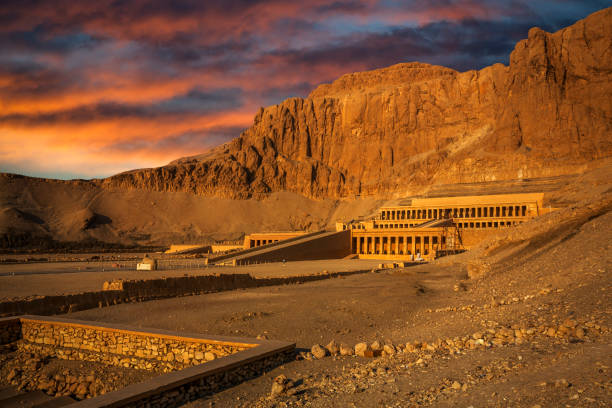
The Temple of Hatshepsut is carved into the limestone cliffs towering above the desert in the valley of Deir el-Bahari. Seeing it from afar is a unique and impressive image that you will never forget.
The design of the temple is the work of the architect Sennenmut, who many historians place as the secret lover of this pharaoh who reigned Egypt for a long period and who won many important battles on different fronts. It is believed to have been built between the seventh and twenty-first years of his reign, with one of its parts dug into the rock and the other in the outer sector divided by three terraces.
The columns of the temple are very varied, but the most curious are those that support the room dedicated to Hathor, with a capital with the carved head of this goddess and whose ceiling has disappeared. Other notable columns are those located on the third terrace, most of them with the carved figure of Osiris.
On the second terrace is the chapel of Anubis, decorated with a large number of paintings with offerings to the gods and still maintain their original colors, which makes it the most impressive room inside the temple.
The sanctuary of the temple is a small room that gives access to two small rooms dedicated to offerings and objects of worship and where the images of Queen Hatshepsut and Thutmose III stand out.
The Temple of Hatshepsut fell into oblivion after the successive invasions of the Egyptian lands. At the end of the 18th century, the remains of this temple were sighted by an expedition of conquest led by Napoleon Bonaparte himself, initiating the interest in this archaeological monument that began to be studied in the 19th century by the archaeologist Auguste Mariette and that, after many excavations and research, was reconstructed so that today it is one of the most precious tourist jewels of the country.
Facts about the Temple of Hatshepsut
Hatshepsut erased from her own temple. Despite being a temple dedicated to the popular pharaoh, there are very few remains of sculptures, columns or other works about Hatshepsut. The reason? That after his death, his brother Thutmose III, angry because his sister snatched the throne 20 years earlier, ordered to destroy all traces related to Hatshepsut and placed statues dedicated to him.
From temple to monastery. With the arrival of the first Christians in Egypt, this temple was converted into a monastery, causing some damage to its interior.
Terraces with animals and vegetation. In the times of the pharaohs, the terraces used to be decorated with a good amount of varied vegetation and different exotic animals used to walk on them. In addition, there were small pools and trees from far away countries.
Design of Hatshepsut Temple
The temple is located in Deir el-Bahari on the western bank of the Nile River.
The temple is located in the Valley of the Kings, a series of landmarks stretching for miles along the Nile River. Hatshepsut's construction and engineering project begins to blend with the surrounding landscape. It is made from the same material that constitutes the mountainous landscape of Upper Egypt where it is situated. It is a precise blend of the Khonsu Temple project and the Ramses II Temple project. Queen Hatshepsut's mortuary temple is a combination of both projects, whether additional or lacking.
The project is defined by a central ramp leading gently into the cliffside through a series of terraces. The ramp starts at what seems to be the natural landscape transitioning into the built architecture. The first raised terrace is wide with no side walls and open to the sky. The second terrace begins to be more defined as a platform separated from the ground level. Both terraces are defined with a stoa along their edge. Contemporary scholars have been developing research on historical Egyptian landscape architecture. Tomb paintings discovered show myrrh and frankincense trees depicted on these terraces. Archeologists are uncovering evidence confirming traces of these vegetative matter. It is projected the terraces may have been filled with groves of trees, further blending the built and constructed environment.
Beyond the terraces, one passes the natural façade of the cliff face, and space is now carved from the mountainside. The ramp leads next to a hypostyle hall , a large hall full of columns. Moving beyond the hypostyle hall, the central axis of the ramp continues to the sanctuary , the smallest space in plan and height. There is a dramatic change in spatial scale reinforcing telescoping and the hierarchy of sanctuary. All the preceding spaces are reinforcing symmetry . The experience from ground level is gentle and deliberate. In contrast to Temple of Khons and Temple of Ramesses II, there is no large frontal plane defining a monumental scale. Mortuary Temple of Queen Hatshepsut is still monumental, but in a delicate relationship so as not to overwhelming the natural landscape.
Another way in which the subtle blending occurs is through the stoas lining the edge of the terraces separating interior and exterior zones . The stoa is an interstitial zone defining an edge. One side of the columns is open to the exterior sky and elements. The other side of the columns is interior space with a roof above. The stoa doesn’t feel completely interior as it is open to the elements along the side, but it feels semi enclosed. The stoa is an interesting interstitial space strategically used at Mortuary Temple of Queen Hatshepsut to further blend natural and constructed elements, architecture and landscape.
Things You Can See at Hatshepsut Temple
Although part of this ancient great structure has been damaged by acts of vandalism, some tourists visiting Luxor on a Luxor tours have commented that the site is well-preserved and worth a visit. This great temple stands on three massive terraces connected by slopes. Visitors are allowed to enter the site every day from 6 AM to 5 PM. Additionally, there is a bazaar or market near the entrance of the building, which contains a wide range of items available for sale. Inside this beautiful temple, one can see the Birth Hall, the Punt Hall, the Hathor Chapel, the Anubis Chapel, and the Amun Sanctuary. While in Egypt, it is highly recommended to include the legendary Hatshepsut Temple in your itinerary, especially if you have purchased one of our highly recommended tours in Egypt.
